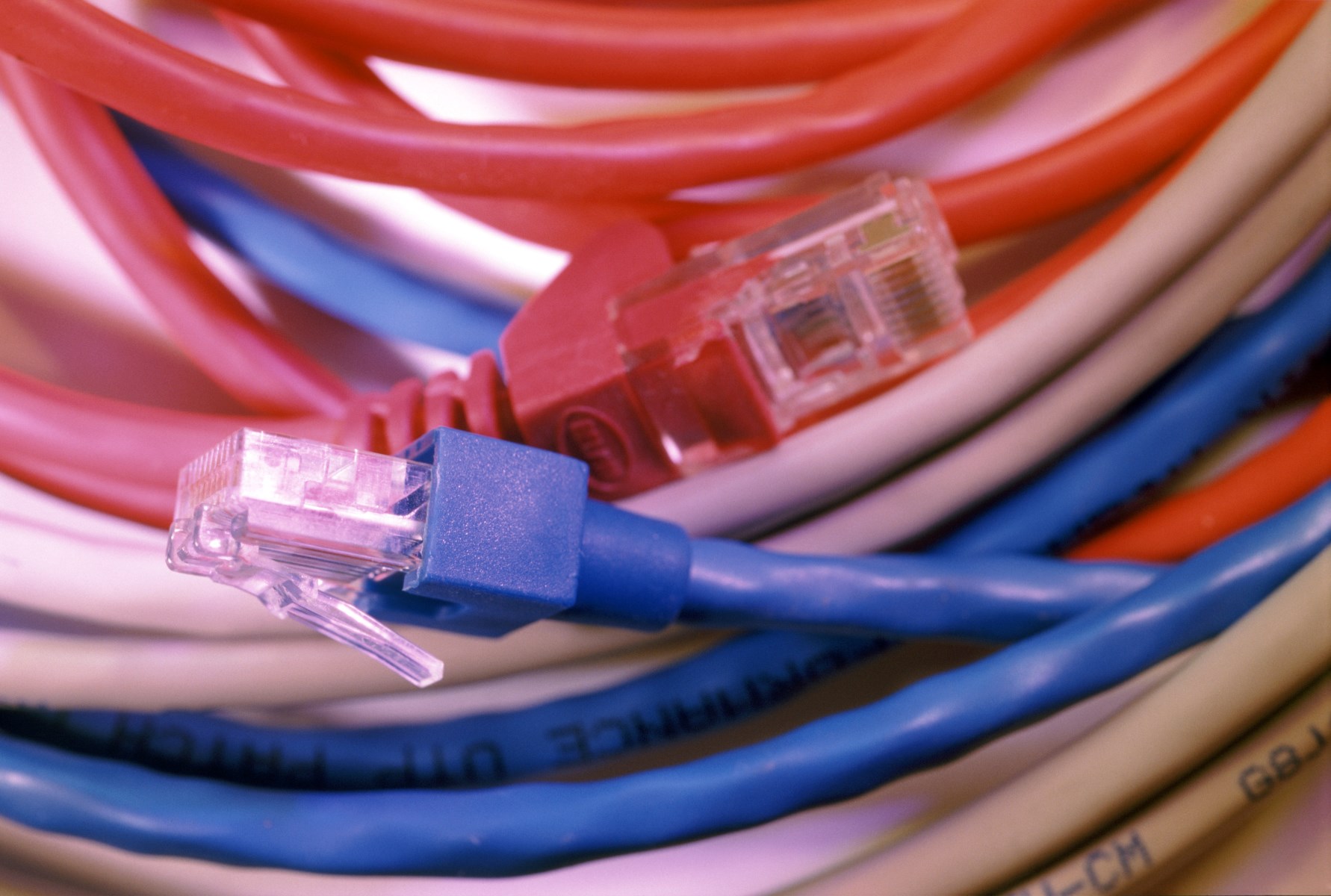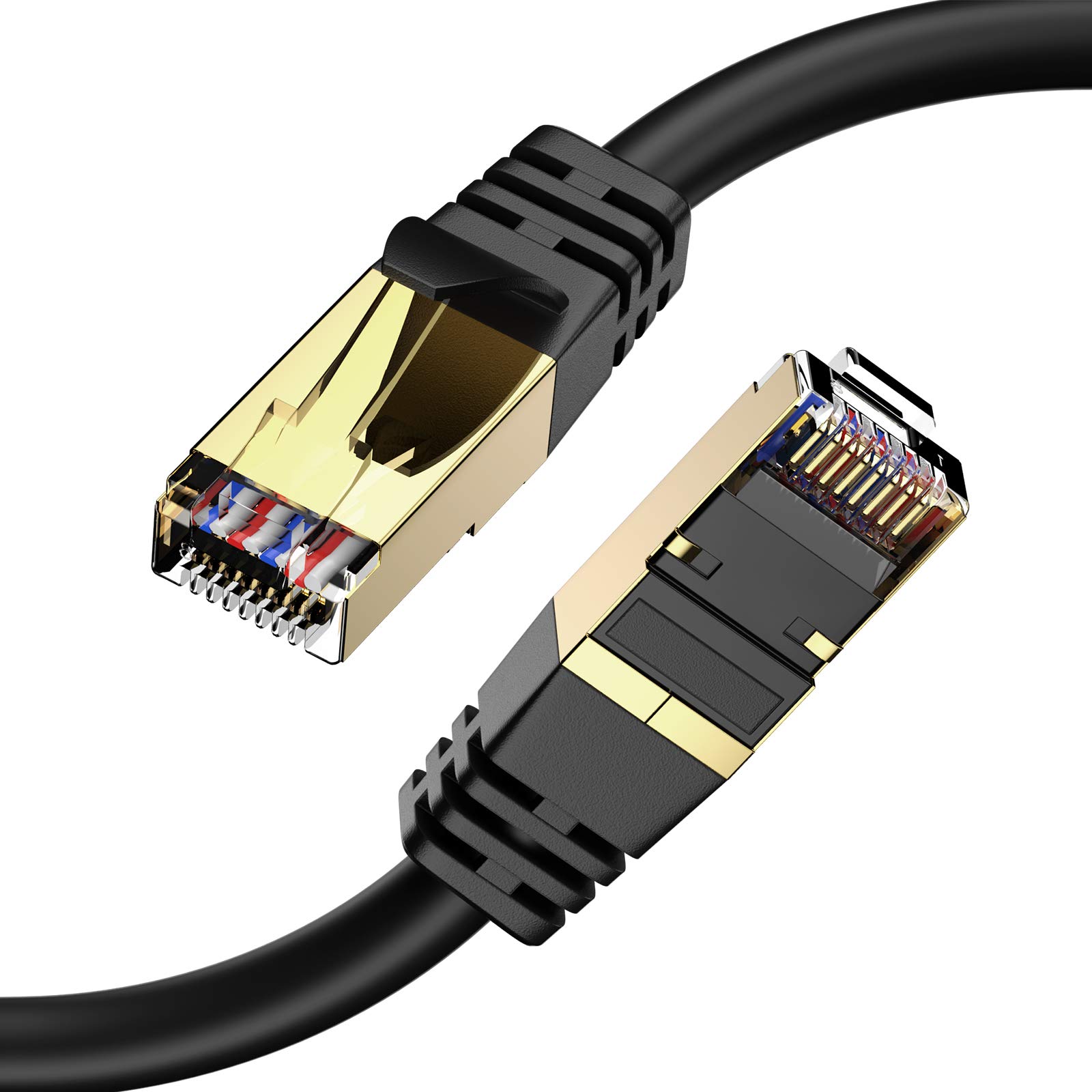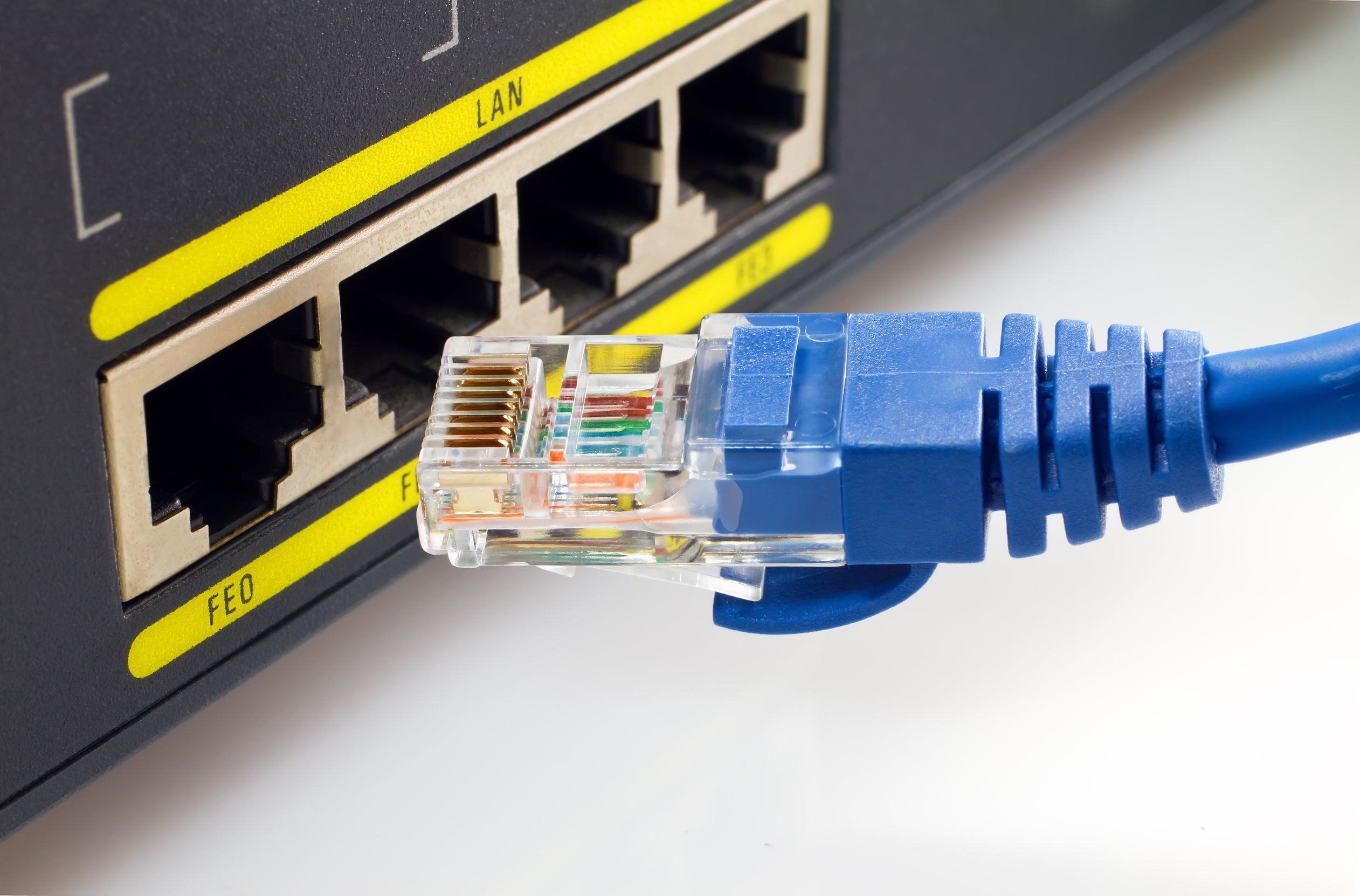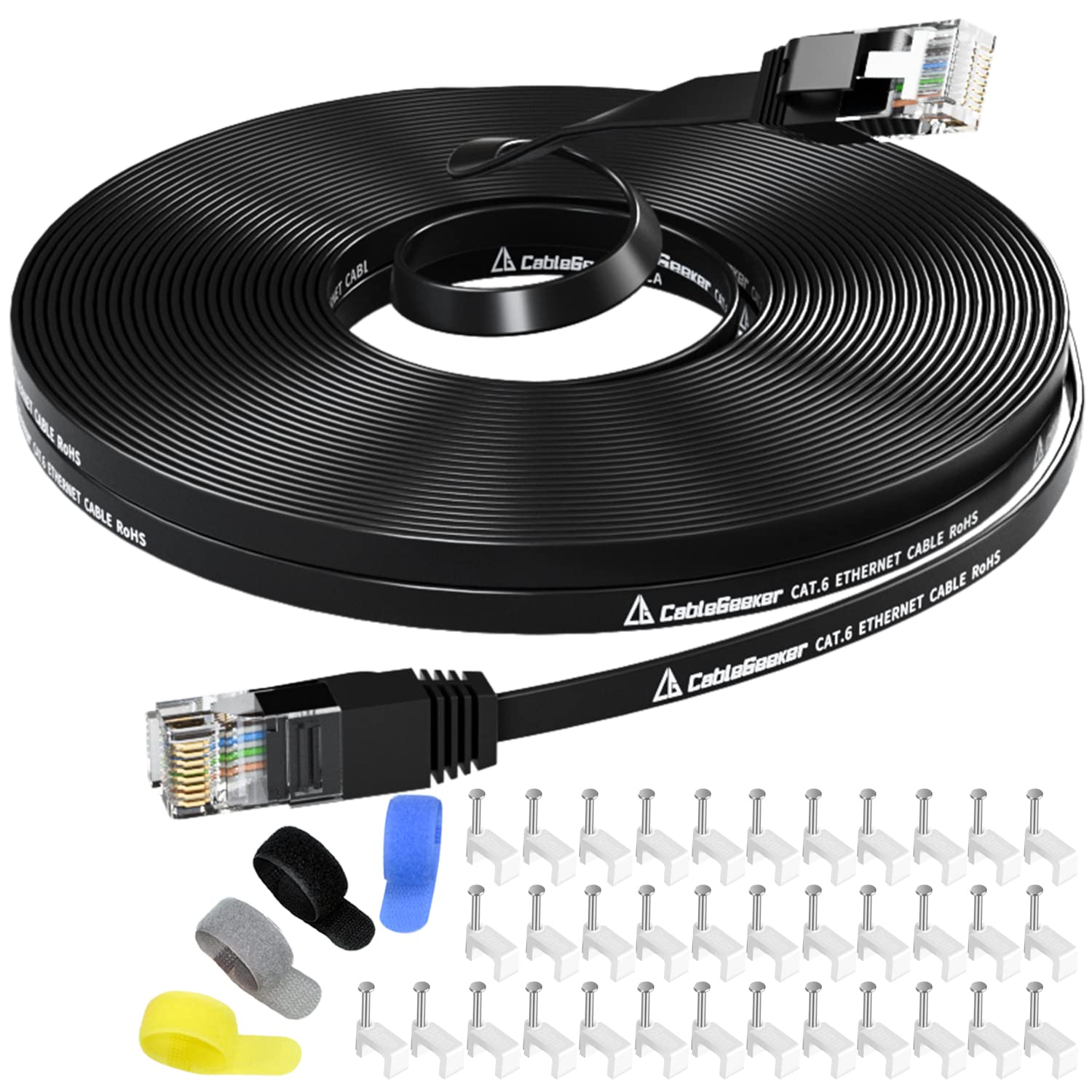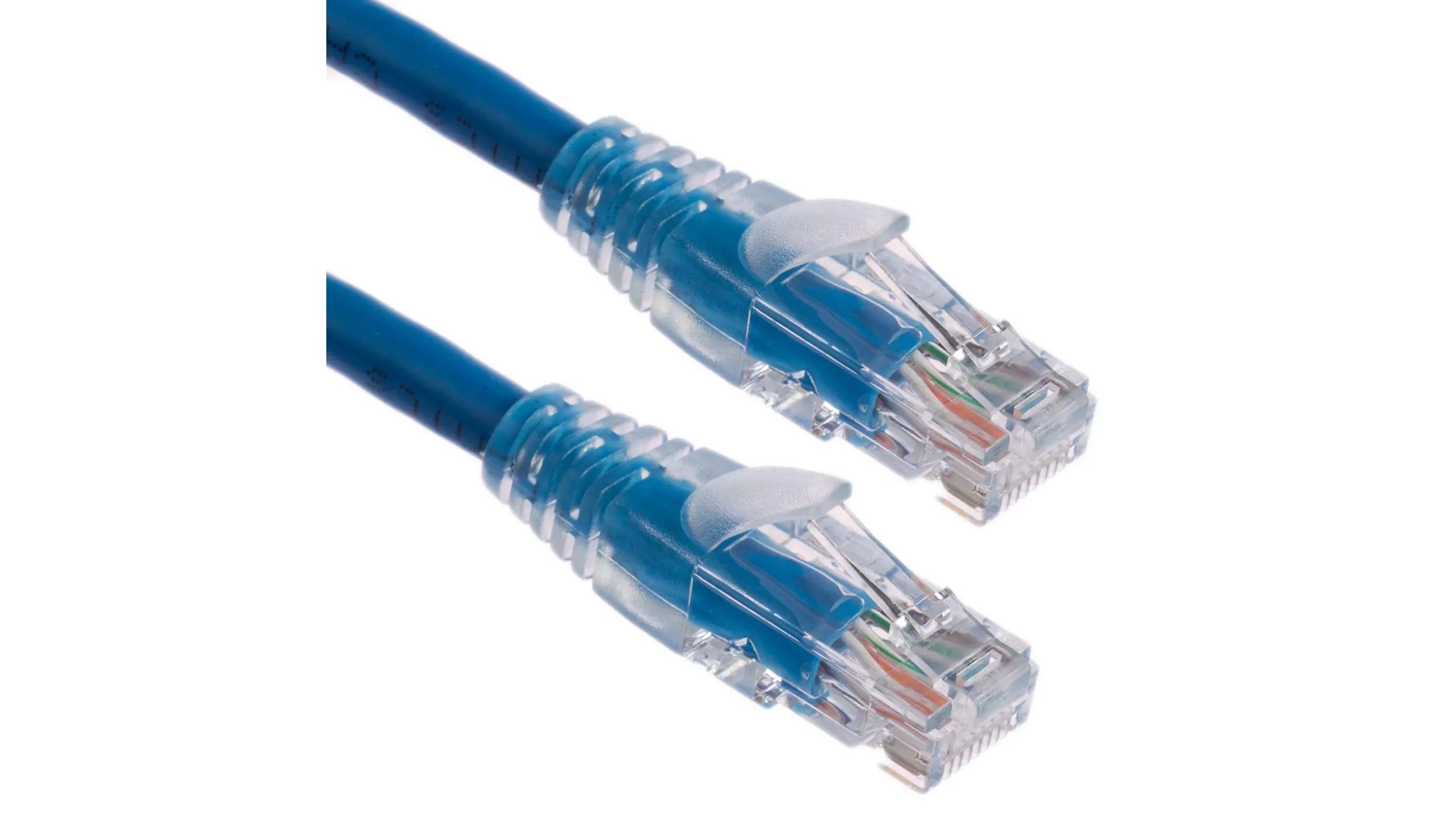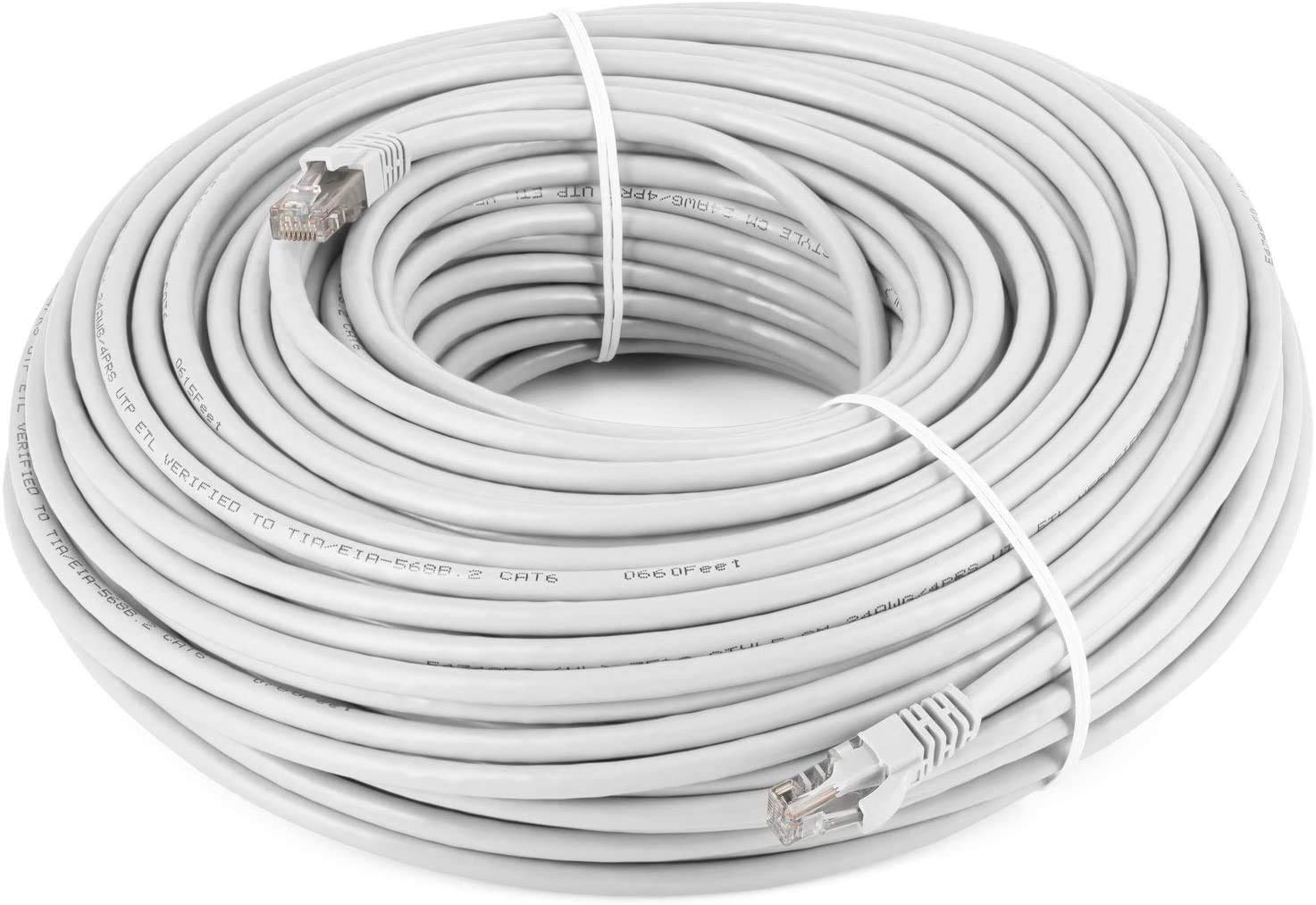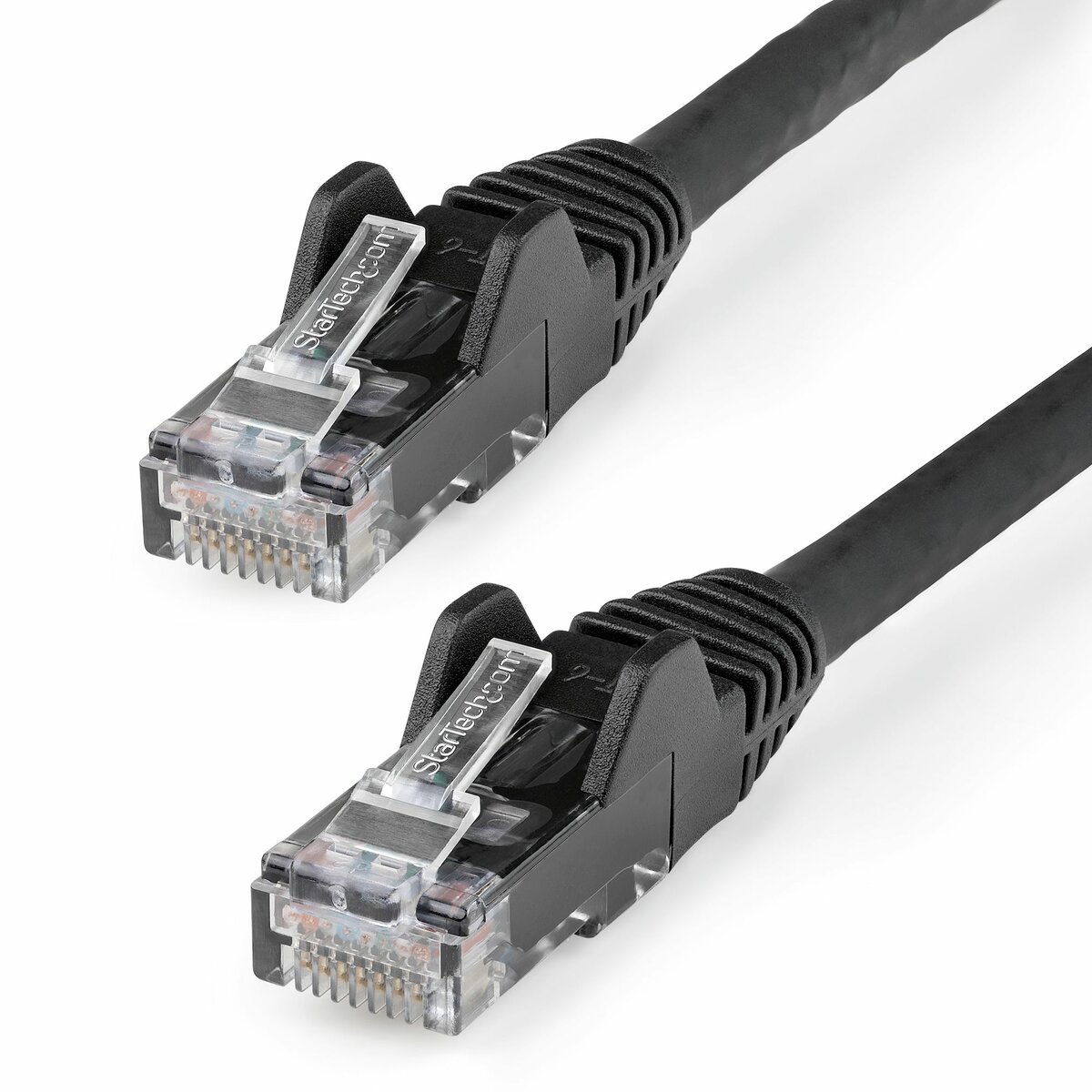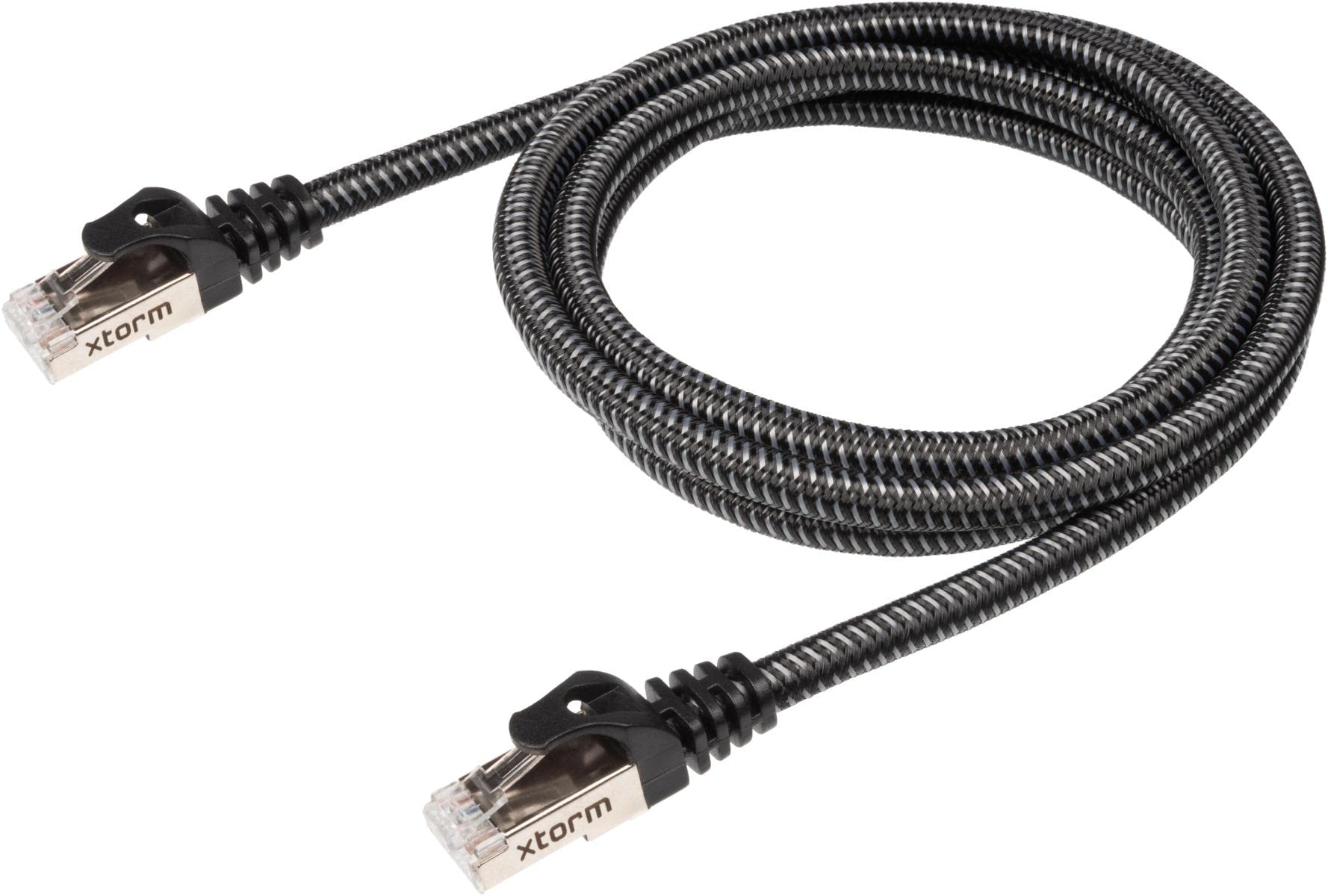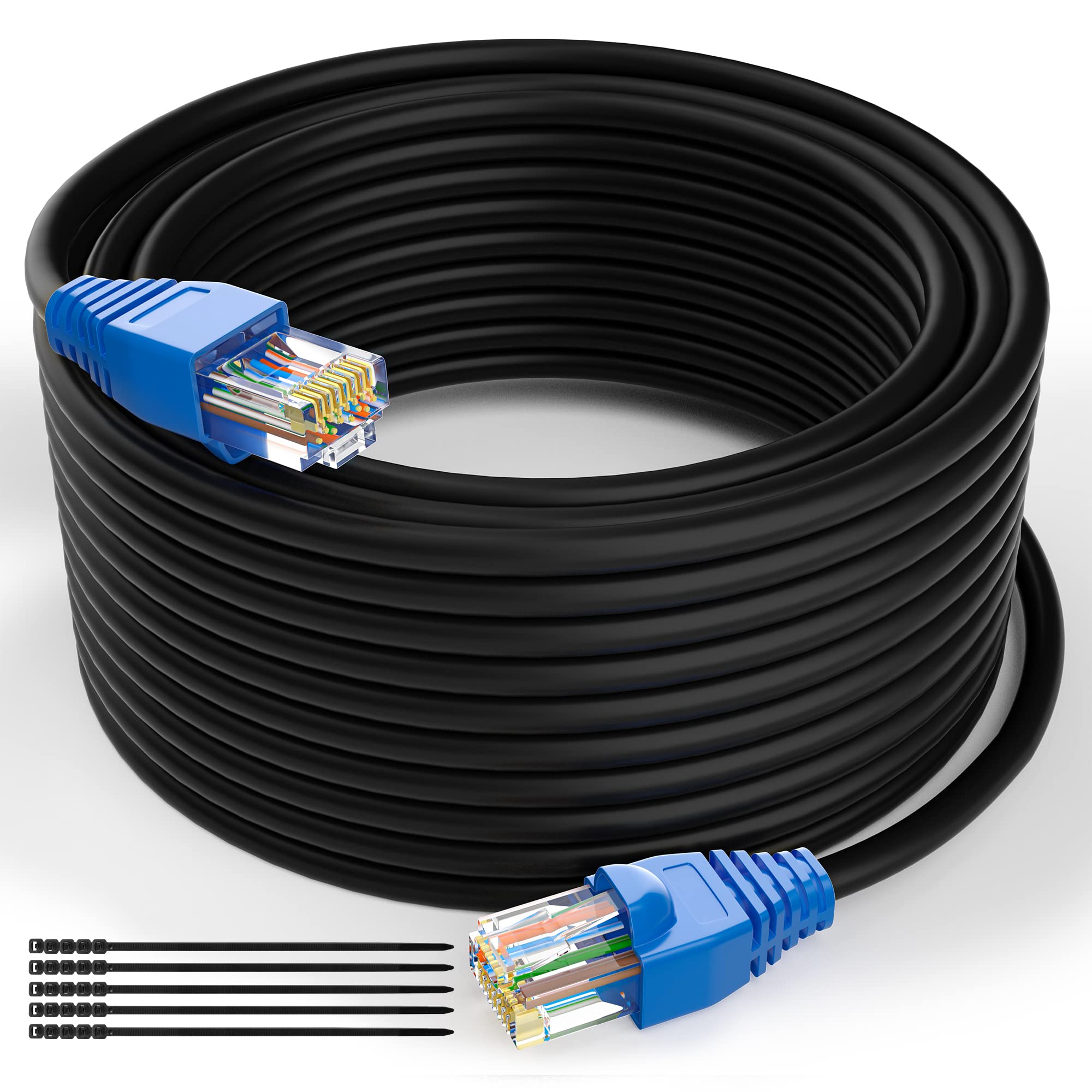Introduction
Welcome to the world of Ethernet cables, where the colors not only add a touch of style but also serve a practical purpose. Whether you are setting up a home network or working in a professional IT environment, understanding the different colors of Ethernet cables can help you identify and organize your network connections effectively.
Ethernet cables are the backbone of wired internet connections, providing high-speed communication between devices. They come in various colors, from vibrant orange to sleek gray, each serving a specific purpose in networking. In this article, we will explore the significance of Ethernet cable colors and how they can aid in identifying the different types and categories of cables.
As technology advances and demands for faster and more reliable internet connectivity increase, it is essential to have a solid understanding of Ethernet cable color coding standards. By familiarizing yourself with these standards, you can ensure proper installation, minimize connectivity issues, and maintain a well-organized network infrastructure.
Whether you are a beginner or an experienced IT professional, this article will guide you through the world of Ethernet cables and their colors, helping you make informed decisions when it comes to setting up and managing your network.
The Basics of Ethernet Cables
Ethernet cables are the physical interfaces that connect devices, such as computers, routers, switches, and other networking equipment, to create a network. They transmit data signals using a technology called Ethernet, which is widely used for local area networks (LANs).
There are several types and categories of Ethernet cables, each designed for specific purposes and varying data transmission speeds. The most common types include Category 5e (Cat5e), Category 6 (Cat6), and Category 6a (Cat6a) cables.
These cables consist of twisted pairs of copper wires encased in a protective jacket. The number of twisted pairs and the quality of the wires within the cable determine its category and capabilities.
Cat5e cables are the most basic and widely used type, capable of transmitting data at speeds up to 1 Gigabit per second (Gbps) over a maximum distance of 100 meters. Cat6 cables, on the other hand, provide improved performance by reducing crosstalk between wires and can handle data speeds of up to 10 Gbps over the same distance.
For even higher speeds and better transmission quality, the Cat6a cables are designed to support data rates of up to 10 Gbps at longer distances (up to 100 meters) without sacrificing signal integrity.
When setting up a network, it’s crucial to choose the appropriate Ethernet cable based on your desired data speeds, distance requirements, and budget. Higher category cables, such as Cat6 or Cat6a, may be more expensive, but they offer better performance and future-proof your network to handle increasing data demands.
In addition to the data transmission capabilities, Ethernet cables also come in different colors to provide visual identification and simplify cable management. These colors serve as a coding system that helps users distinguish between various types of cables, making it easier to identify specific connections within a network infrastructure.
Now that we have covered the basics of Ethernet cables, let’s delve into the specific color coding standards and their meanings in the next section.
Understanding Ethernet Cable Categories
Ethernet cables are categorized based on their performance and capabilities. These categories define the maximum data transmission speeds and distance limitations that the cables can support.
The most commonly used Ethernet cable categories are Cat5e, Cat6, and Cat6a:
- Category 5e (Cat5e): Cat5e cables are designed to support data transmission speeds of up to 1 Gigabit per second (Gbps) over a maximum distance of 100 meters. They are widely used in home networks and small office setups.
- Category 6 (Cat6): Cat6 cables provide improved performance compared to Cat5e, with reduced crosstalk between wires. They can support data speeds of up to 10 Gbps over a 100-meter distance. Cat6 cables are commonly used in larger office environments and professional networking setups.
- Category 6a (Cat6a): Cat6a cables offer even higher performance than Cat6, allowing for data rates of up to 10 Gbps over a distance of 100 meters without compromising signal integrity. They are ideal for high-density network environments and installations where future scalability is a priority.
It’s important to note that the category of the cable affects its ability to support higher data speeds and maintain signal quality over longer distances. Upgrading to a higher category cable, such as Cat6 or Cat6a, can future-proof your network infrastructure and ensure optimal performance as technology advances.
When choosing an Ethernet cable category, consider factors such as the network speed requirements, distance limitations, and the type of devices being connected. Additionally, check the compatibility of the cable with the networking equipment you are using, as some older devices may not support higher category cables.
Understanding the different Ethernet cable categories will help you make informed decisions when setting up your network and ensure that you choose the appropriate cable to meet your specific requirements.
The Colors of Ethernet Cables
Ethernet cables come in a variety of colors, making it easier to identify and differentiate between different cables within a network infrastructure. While color coding is not standardized across all manufacturers, there are some common color schemes and conventions that can help simplify cable management and troubleshooting.
The most commonly used colors for Ethernet cables are:
- Blue: Blue cables are often associated with Cat5e or older Ethernet cable categories. They are commonly used in residential and small office networks.
- Yellow: Yellow cables are often used for outdoor or industrial applications. They are typically designed for more rugged environments and can withstand harsh conditions.
- Gray: Gray cables are popular in professional networking environments. They offer a sleek and professional look while providing reliable performance.
- Red: Red cables are sometimes used for special purposes or to distinguish specific connections within a network. They may indicate connections to critical devices or connections with specific requirements.
- Green: Green cables are occasionally used to indicate connections that are part of a separate network or have specific security protocols.
- Orange: Orange cables are commonly associated with higher-performance Ethernet cables, such as Cat6 or Cat6a. They are often used in enterprise networks and data centers.
- White: White cables are occasionally used for specific purposes, but they are not as common as other colors.
It is worth noting that the color of an Ethernet cable does not directly impact its performance. The color is primarily for visual identification and organization purposes. However, in some cases, certain colors may be associated with specific cable categories or applications, helping in quick identification.
When setting up or managing a network, it is recommended to choose a consistent color scheme to make it easier to identify and troubleshoot connections. This can help save time and effort in identifying cables, especially in complex network setups.
Next, let’s explore the standards and conventions for Ethernet cable color coding, which can provide further insights into the meaning behind the colors.
Ethernet Cable Color Coding Standards
While the color coding of Ethernet cables is not standardized universally, there are specific conventions and standards that have been widely adopted in the industry. These color coding standards help ensure consistency and facilitate easy identification of cables based on their functionality or purpose.
One commonly used color coding standard is the TIA/EIA-568-B standard, which defines the color assignments for the individual twisted pairs within an Ethernet cable. According to this standard:
- The first pair of wires in an Ethernet cable is typically colored white and blue.
- The second pair is colored white and orange.
- The third pair is colored white and green.
- The fourth pair is colored white and brown.
Each wire within a twisted pair is also color-coded. For example, within the first pair, the white wire is paired with a blue wire, and together they form a twisted pair. Similarly, the white wire in the second pair is paired with an orange wire, and so on.
Following these color coding standards can help ensure proper termination of Ethernet cables, making it easier to identify and match the corresponding wires during installation.
In addition to the twisted pairs, Ethernet cables may also have a plastic separator, which is typically of a different color. The separator helps maintain the correct spacing and minimize crosstalk between the twisted pairs. The color of the separator may vary depending on the manufacturer, but it is generally distinguishable from the color of the twisted pairs.
While these color coding standards provide a consistent approach to Ethernet cable manufacturing and installation, it is essential to note that not all manufacturers adhere to these standards. Some may use their own color coding schemes, especially for cables with different functionalities or custom requirements.
Therefore, if you are working with Ethernet cables from different manufacturers or in a professional networking environment, it is crucial to verify the color coding scheme being used and ensure consistency across your network infrastructure.
In the next section, we will explore some common color schemes for Ethernet cables that can help in identifying specific connections or purposes.
Common Color Schemes for Ethernet Cables
While the color coding of Ethernet cables may vary, there are some common color schemes that are often used to indicate specific connections, purposes, or functions within a network infrastructure. These color schemes can help simplify cable management, troubleshooting, and identification.
Here are some common color schemes for Ethernet cables:
- Standard Color Coding: In the absence of a specific color coding scheme, many network installations follow a standard color coding convention where each Ethernet cable pair has a unique color combination. For example, the first pair may be blue and white, the second pair may be orange and white, and so on. This ensures consistency and makes it easier to identify the individual twisted pairs within a cable.
- Cross-Over Cables: Cross-over cables are used to directly connect similar network devices, such as two computers or two switches, without the need for a separate network hub or switch. These cables may have a specific color scheme, often using a combination of solid colors and striped wires to indicate their cross-over functionality. Consult the manufacturer’s documentation or verify the labeling on the cable to identify a cross-over cable.
- Specialized Applications: In some cases, Ethernet cables used for specialized purposes or in specific industries may have different color schemes. For example, cables used for Power over Ethernet (PoE) applications or those designed for outdoor or industrial environments may have unique color coding to indicate their specialized functionality.
It is important to note that these color schemes are not standardized universally and can vary across manufacturers or specific applications. Therefore, it is essential to consult the documentation or labeling provided with the cables to ensure accurate identification and proper usage.
By following consistent color schemes or documentation provided by the manufacturer, you can easily identify and manage Ethernet cable connections within your network infrastructure, minimizing confusion and facilitating efficient troubleshooting.
Next, we will decode the colors used in Ethernet cables and explore their meanings.
Decoding Ethernet Cable Colors
Decoding the colors used in Ethernet cables can help you understand their meanings and purposes within a network infrastructure. While color coding is not standardized universally, certain patterns and conventions have been established to aid in cable identification and organization.
Here are some key points to consider when decoding Ethernet cable colors:
- Consistency: Within a specific network installation or from a particular manufacturer, it is important to maintain consistency in color coding. This allows for easier identification and troubleshooting of cable connections.
- Cable Type: Different cable types, such as Cat5e, Cat6, or Cat6a, may use different colors or color schemes. The colors can indicate the category or capabilities of the cable, helping you select the appropriate cable for your networking needs.
- Functional Identification: In some cases, colors may be used to identify specific connections or functions within a network. For example, using different colored cables for network uplinks, device connections, or connections to specific areas of a building can assist in organizing and managing the network.
- Compatibility: When working with Ethernet cables from different manufacturers, it is important to confirm the color coding scheme being used. While there may be some variations, adhering to a consistent color coding convention ensures compatibility and interoperability.
It is important to note that the meanings and interpretations of specific colors in Ethernet cables can vary based on the context, installation, or specific network requirements. Therefore, it is recommended to refer to any documentation or labeling provided with the cables to understand their intended usage or significance.
When in doubt, consult with an IT professional or network administrator who can provide guidance on color coding standards and practices specific to your network environment.
By decoding the colors used in Ethernet cables, you can effectively manage and identify cable connections within your network infrastructure, facilitating efficient troubleshooting and maintenance.
Next, let’s explore the meanings associated with different Ethernet cable colors and what they can indicate in a network setup.
Ethernet Cable Colors and Their Meanings
The colors used in Ethernet cables can convey specific meanings or indicate various aspects within a network setup. While the meanings of cable colors may not be standardized universally, there are some common interpretations and practices in the industry.
Here are some possible meanings associated with Ethernet cable colors:
- Blue: Blue cables are often associated with standard Ethernet connections or older cable categories like Cat5e. They are commonly used in residential and small office networks.
- Yellow: Yellow cables are sometimes used for outdoor or industrial applications due to their increased durability and ability to withstand harsh conditions.
- Gray: Gray cables are often chosen for professional networking environments due to their sleek and professional appearance. They provide reliable performance and are commonly used in office settings.
- Red: Red cables may be used for special purposes, such as critical connections or connections requiring specific requirements or protocols.
- Green: Green cables might be used to indicate connections that are part of a separate network or have specific security protocols.
- Orange: Orange cables are commonly associated with higher-performance cable categories like Cat6 or Cat6a. They are often used in enterprise networks and data centers where higher data speeds are required.
- White: White cables may occasionally be used for specific purposes, but they are not as common as other colors.
It’s important to note that these interpretations may vary based on the specific network setup, organization, or established conventions within an industry or company. Additionally, some manufacturers may have their own unique color coding schemes for specific cable categories or applications.
When working with Ethernet cables, it is crucial to refer to any documentation or labeling provided with the cables to understand the intended meanings or purposes of specific colors within your network infrastructure.
By understanding the possible meanings associated with Ethernet cable colors, you can make informed decisions when identifying, organizing, and troubleshooting cable connections within your network environment. This can help streamline network management and improve overall efficiency.
Next, let’s explore how to choose the right Ethernet cable color for your specific network setup.
Choosing the Right Ethernet Cable Color for Your Network Setup
When it comes to choosing the right Ethernet cable color for your network setup, there are a few factors to consider. While color alone doesn’t impact the performance of the cable, it can aid in organization, identification, and simplifying cable management.
Here are some tips to help you choose the right Ethernet cable color:
- Consider Functionality: Determine if you have specific needs within your network that could benefit from color-coded cables. For example, you might want to use different colored cables for specific purposes like network uplinks, device connections, or connections to different areas of a building. This can help enhance organization and simplify troubleshooting.
- Follow Existing Conventions: If your network follows a specific color coding convention or standard, it’s best to stick with that to ensure consistency and compatibility across your infrastructure. It can also make it easier for other IT professionals to understand and maintain your network.
- Consider Aesthetics: If aesthetics are important to you, choose a cable color that complements the overall look of your network setup. This may be especially relevant if equipment is visible or if the network is installed in customer-facing areas.
- Think About Future Expansion: If you anticipate future expansion or upgrades within your network, it may be wise to choose a higher-performance cable category (such as Cat6 or Cat6a) with its associated color. This will future-proof your network and ensure compatibility with faster data speeds.
- Consult Documentation or Experts: If you’re unsure which color coding scheme or color to choose, consult the documentation provided by the cable manufacturer or seek advice from IT professionals who are well-versed in network installations. They can provide guidance and expertise based on industry standards and best practices.
Remember, it’s important to maintain consistency within your network when choosing cable colors. This consistency will help with cable identification, troubleshooting, and overall organization, which can save time and effort in the long run.
Choosing the right Ethernet cable color is a small but important decision that can impact the efficiency and aesthetics of your network setup. By considering functionality, following conventions, and considering future needs, you can make an informed choice that aligns with your specific network requirements.
In the next section, we will wrap up this article with a brief recap of what we’ve discussed about Ethernet cable colors and their significance in networking.
Conclusion
Ethernet cable colors play a significant role in network installations by aiding in cable identification, organization, and management. While color coding is not standardized universally, there are common color schemes and conventions that can simplify network setups.
Understanding the basics of Ethernet cables and their categories, as well as the meanings associated with different colors, allows you to make informed decisions when setting up and managing your network infrastructure. By following established color coding standards or conventions, you can ensure compatibility and ease of troubleshooting.
When choosing Ethernet cable colors, consider the functionality, aesthetics, and future expansion of your network. Selecting the appropriate cable color can enhance organization, simplify maintenance, and reflect the specific needs of your network setup.
Remember to consult the manufacturer’s documentation or seek advice from IT professionals to verify any color coding schemes specific to the cables you are using. Maintaining consistency within your network infrastructure is crucial for proper identification and efficient management.
Overall, Ethernet cable colors provide both a practical and visual element to network installations. They serve as a visual coding system, making it easier to identify connections and troubleshoot issues. By understanding and implementing the appropriate color coding standards, you can optimize your network’s performance and maintain a well-organized infrastructure.
We hope this article has provided you with valuable insights into Ethernet cable colors and their significance within network setups. By applying this knowledge, you can effectively manage your network connections, troubleshoot with ease, and ensure a robust and efficient network environment.







